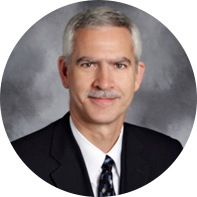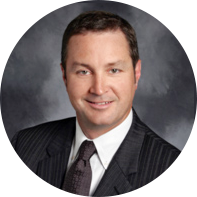General/Vascular
- Overview
- Equipment
- Our Doctors
- What's New
- Patient Education Videos
Moreland Surgery Center offers a variety of general and vascular surgery procedures to help maintain and promote patient health. Moreland Surgery Center provides our surgeons with high definition video camera equipment to perform the latest minimally invasive (laparoscopic) procedures to facilitate faster patient recovery time.
Here is a brief overview of some of our more common procedures:
Hernia Repair
A hernia is a general term referring to a protrusion of tissue through the wall of the cavity in which it is normally contained. Most areas of the body are separated by tissue walls that are made up of muscle, fascia (a thick band of fibrous tissue), or other structures. Occasionally, a weakness will develop in a tissue wall allowing the contents to push outward or sometimes to push completely through the wall. These weak points tend to develop in similar areas for most people and therefore are usually well understood and easily recognized by a physician. Hernia repair (or Herniorrhaphy) is surgery to correct a hernia and is carried out using a variety of techniques depending on the location and size of the protrusion. Most hernia repairs can be done using either the conventional open surgery or laparoscopic.
Hemorrhoid Surgery
Hemorrhoid surgery (also called hemorrhoidectomy) is the surgical removal of hemorrhoids. Hemorrhoids are swollen or enlarged veins located inside (internal) and outside (external) the anus. They are usually caused by straining when constipated or during pregnancy. The surgery can remove large internal hemorrhoids that do not respond to non-surgical treatment and large external hemorrhoids.
Gallbladder Removal
Laparoscopic gallbladder removal (also known as laparoscopic cholecystectomy) is the procedure where the gallbladder is removed using instruments inserted through small incisions in the abdomen. The procedure is performed in an operating room with the patient under general anesthesia. The gallbladder is an organ that stores bile used in food digestion. The gallbladder is located under the liver. Sometimes gallstones that block the normal flow of bile to the small intestine can form in the gall bladder and cause pancreatitis, a dangerous condition. When pancreatitis occurs or gallbladder cancer is suspected, the gallbladder is removed.
Breast Lumpectomy
Lumpectomy, also called partial mastectomy, is the removal of part of the breast and sometimes nearby lymph nodes to remove suspected cancerous cells. It is the most common type of breast cancer surgery. Lumpectomy is followed by radiation therapy for approximately six weeks to destroy any cancer cells that may still be in the breast tissue.
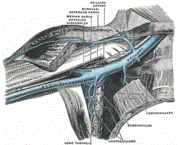
Central Venous Access Device Insertion
In medicine, a "central venous access device" or “port”is a small medical appliance that is installed beneath the skin. A connects the port to a vein. Under the skin, the port has aseptum through which drugs can be injected and blood samples can be drawn many times, usually with less discomfort for the patient than a more typical "needle stick". Ports are used mostly to treat hematology and oncology patients, but recently ports have been adapted also for hemodialysis patients. The port is usually inserted in the upper chest, just below the clavicle or collar bone, leaving the patient's hands free. There are several different brand names for these ports such as: Port-a-Cath, Microport, Bardport, PowerPort (power injectable), Passport, Infuse-a-Port, Medi-Port, and Lifesite (for hemodialysis patients). The term totally implantable venous access system (TIVAS) is also used.
Lesion Excision
Patients ask to have skin lesions or moles removed for a variety of reasons. For some, the mole has changed and the patient is concerned about the possibility of skin caner. For others, the mole is symptomatic (pain, bleed, itch…) or they just don’t like how it looks. Generally, skin lesion excision is a very quick and relatively painless procedure that takes only about 10 minutes and is performed under local anesthesia.
Click here for more information
VNUS Radio Frequency Generator
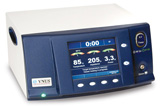
The RFGPLUS delivers RF energy to the VNUS ClosureFAST™ catheter, enabling controlled vein lumen contraction for a fast and effective treatment. Temperature and power are continuously monitored for optimal performance. The generator can also be used with the VNUS ClosureRFS™ stylet providing continuous procedural feedback during the treatment of refluxing perforator veins.
This device has been specifically engineered with the end user in mind. A simple and intuitive user interface, combined with a large color screen and optimized internal software, make the Closure™ procedure faster, easier, and effective.
Radio Frequency (RF) Vein Ablation
Venous reflux or venous insufficiency develops when the valves that usually keep blood flowing out of your legs become damaged or diseased causing varicose veins.
The VNUS Closure procedure is a minimally invasive treatment alternative used to treat varicose veins with less pain and less bruising when compared to traditional vein stripping surgery and laser treatment. Using the Closure system, physicians close the diseased veins by inserting the Closure catheter into a vein and heating the vein wall using temperature-controlled RF energy. Heating the vein wall causes collagen in the wall to shrink and the vein to close. After the vein is sealed shut, blood then naturally reroutes to healthy veins.
Harmonic
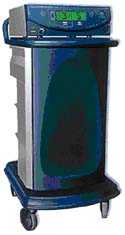
HARMONIC Ultrasonic Surgical Devices are the leader in advanced energy.Our HARMONIC Surgical Instruments deliver precisely directed mechanical energy—with an ultrasonic, vibrating blade. A single HARMONIC Device dissects, cuts, grasps, spot coagulates, and creates otomies. The result is a winning combination of performance, minimal thermal spread, and multifunctionality.HARMONIC® Technology uses ultrasonic vibration to simultaneously cut and coagulate tissue. This minimizes lateral thermal tissue injury, reduces the need for electrocautery, and provides important recovery advantages for your patients.5
Site Rite
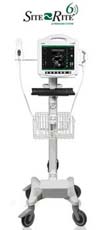
The Site~Rite* 6 Ultrasound System meets AHRQ (Agency for Healthcare Research and Quality) recommendations for use of real-time ultrasound guidance for central line placement. Site-Rite reduces complications of central line placement by providing clear vessel visualization that reduces risk of inadvertent arterial puncture, hematoma or pneumothorax. Clinical investigation has demonstrated increases in vascular access procedural success for central catheter placement among clinicians using real-time ultrasound guidance.The Site~Rite* 6 Ultrasound System’s patented needle guides direct the needle to the target vessel.
Force Triad
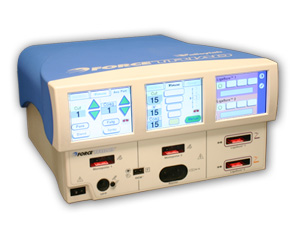
The ForceTriad™ energy platform is a full featured radiofrequency energy system providing your operating room with state-of-the-art technology, enabling surgeons to precisely manage energy and desired tissue effect. The ForceTriad™ energy platform delivers both enhanced monopolar and bipolar energy with the next generation of LigaSure™ tissue fusion technology in an all-in-one unit.
LigaSure™ tissue fusion in the ForceTriad™ energy platform has faster fusion cycles, more flexible fusion zones and less desiccation than the original LigaSure™ generator because TissueFect™ sensing technology actively monitors changes in tissue impedance and provides a realtime adjustment control of the energy output
The Force TriVerse™ electrosurgical device allows you to access the Valleylab™ mode for a unique combination of monopolar hemostasis and dissection while using a lower power setting resulting in less char, less thermal spread and less arcing than a traditional coagulation mode. The Force TriVerse™ electrosurgical device, used in conjunction with Opti2™ interchangeable solid shaft laparoscopic electrodes, provide performance and convenience for your laparoscopic procedures. It is designed with you, the surgeon, in mind and offers a range of options at your fingertips for precise control and tissue effect.
What's New In General/Vascular Surgery?

Varicose Veins
If you suffer from varicose veins, you’re a member of a very large club. Some 25 million Americans face a daily struggle with the swollen, ropey veins that can cause throbbing pain, severe swelling, and heavy, tired legs. Half of all Americans over 50, and two-thirds of women over 60, have the condition. And many have dealt with it for decades, because varicose veins can appear even in teenagers too young to vote.. Read More

